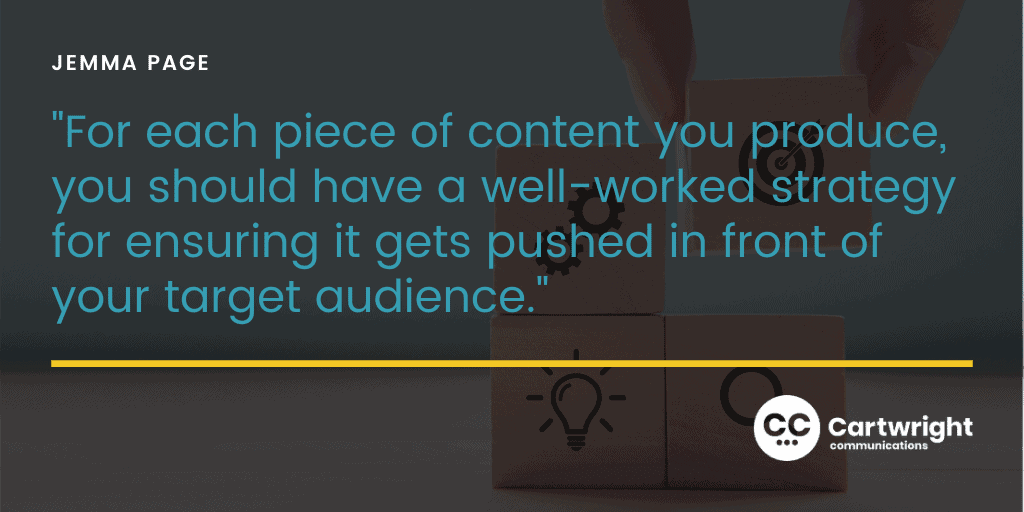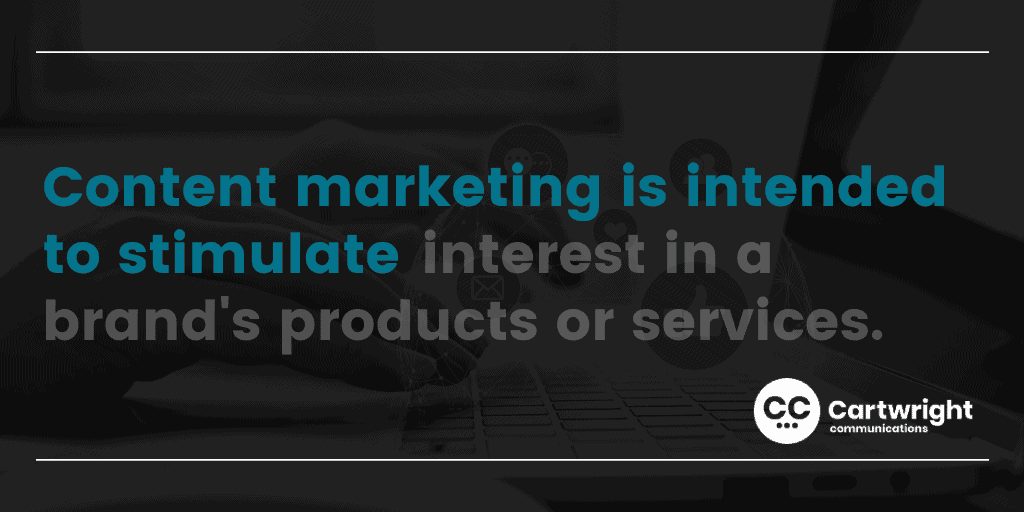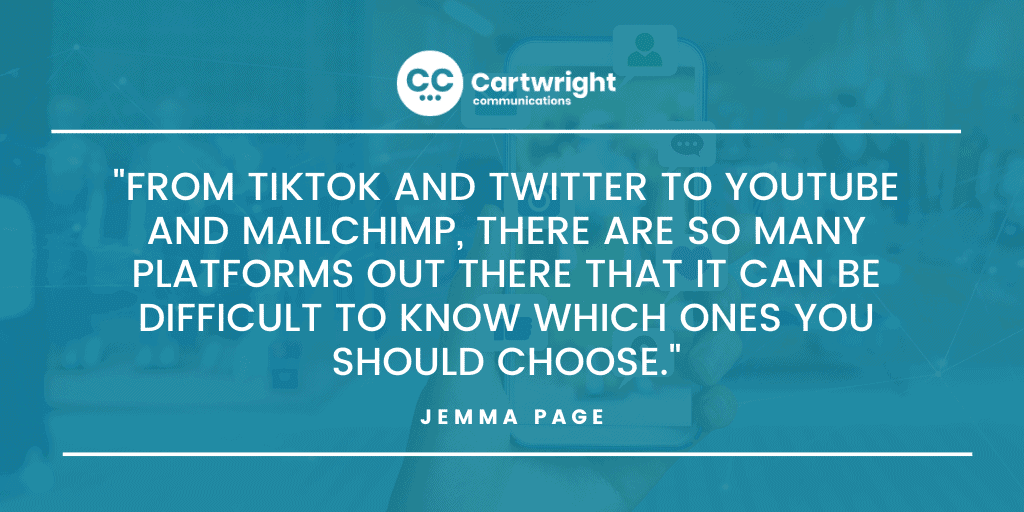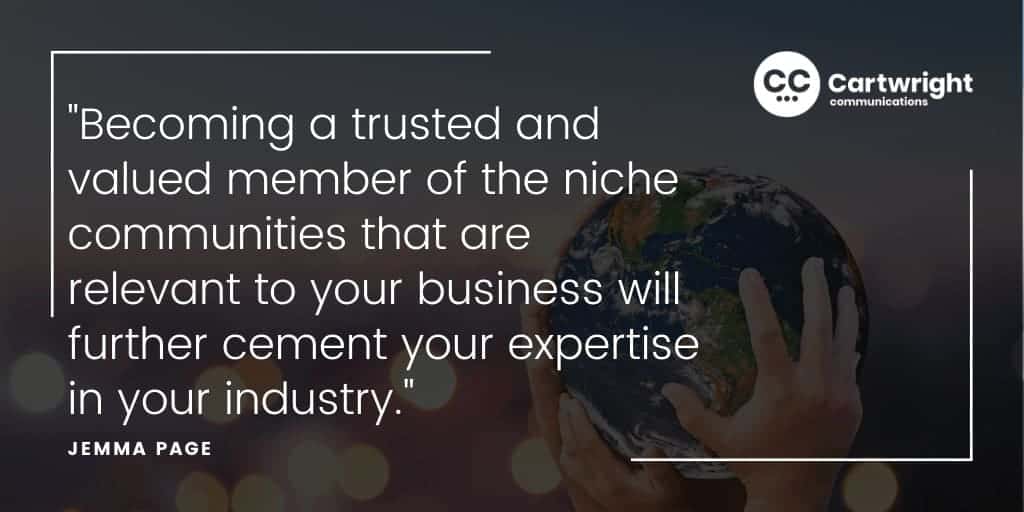It’s no longer enough to simply draft a piece of content and place it on the channel it was created for. In order to produce results and expand your audience reach, it’s important to engineer your content marketing and social media strategy, as account manager Jemma Page discusses.
How to make the most of your content
Let’s start with a blog post as an example. It’s probably taken you a good few hours to expertly craft the piece and fully optimise it for the web.
The time spent drafting your blog shouldn’t be wasted by simply allowing it to sit on your company’s website. You want to ensure it is seen by your intended audience.
This is where content amplification and taking a multi-platform approach comes into play.
Tailor your social media strategy
For each piece of content you produce, you should have a well-worked content strategy for ensuring it gets pushed in front of your target audience on the right social platforms.
Start by deploying the piece on its intended channel – if we’re sticking with the blog post example, that would be your website – before further sharing on other owned channels such as social media accounts, before building relationships to further push it through earned channels.
Thinking strategically about how you can make sure your content is seen by your target audience can greatly expand the number of people who view it, while also working to establish you as a trusted brand and thought leader in your industry.
But whereabouts do you start?

1. Create debate and offer advice
First thing’s first – ensure the content you’re creating is intriguing and useful or leads to discussion and debate.
Content marketing involves the creation and sharing of material that does not explicitly promote a brand. Instead, it is intended to stimulate interest in a brand’s products or services.
A customer-focused strategy that adds value will help to position you as a thought leader. You want to engage your audience instead of boasting about your business in a bid to boost sales.
If you’re a law firm, for example, think about changing the focus of your piece from “how we can support you to resolve business disputes caused by COVID-19” to “what suppliers should do if a wedding has been cancelled or postponed as a result of coronavirus”.
Offering genuine advice, as opposed to shouting about your services, will directly target your customers in ways that suits them.
Of course, don’t forget your call to action so a potential client can get in touch for more information.

2. Find the right owned platforms
Once you’ve got your main piece of content, start by promoting it and sharing it on your owned platforms. This includes your social media channels, blog or company newsletter.
The benefits of utilising the content on your owned channels are that you have full control over what is posted and it’s very cost efficient as these platforms are likely to be free to use. Producing effective owned media is also the first step to gaining earned media.
But where do you start? From TikTok and Twitter to YouTube and Mailchimp, there are so many platforms out there that it can be difficult to know which ones you should choose.
The most effective social media strategies are informed by data-driven insights, such as demographics.
Start by asking yourself what channels your target audience are using. It’s probably not worth creating a Snapchat account if your largest pool of potential customers is made up of 60-year-olds.
Next, it’s important to question the kind of content you’re wanting to create. If you’re interested in sharing industry updates and company news, you want a platform such as LinkedIn as these content formats are traditionally suitable for B2B audiences.
For short-form video content, consider Instagram, Snapchat or TikTok. For more longer video content, Facebook, Twitter and YouTube will be more relevant.
If you’re wanting to focus on image-based content, and you’re a B2C brand, consider Pinterest. However, if you’re interested in building an aspirational, visual brand story, Tumblr and Instagram will be more suitable.
Finally, and most importantly, consider how many channels you can realistically manage. It’s better to do one channel well than to be on every platform but hardly post.
3. Develop a paid social strategy
If you have content you’re particularly proud of, consider putting budget behind it – instead of relying solely on organic reach.
Social media advertising is really cost effective. It also allows you to choose the people you want to target, which is especially useful if you’re trying to break into new audiences.
4. Don’t forget your internal communications
Word of mouth is perhaps the most effective form of advertising. We trust things more when the people we like trust them and we’re more likely to take recommendations from those we trust.
Ensuring your staff share, like or comment on work-related content on social media will ignite your content within and push it out to their connections.

5. Move into earned channels
You’ve nailed your owned media strategy. But don’t just stop at the channels you own.
If you’ve produced a blog post on an engaging subject that you think is relevant to a wider audience, pitch the topic to media as a feature or tweak the piece slightly and issue it as a press release.
Gaining press coverage gives you visibility and credibility, while also allowing you to get in front of a wider audience.
Once you’ve built positive relationships with key journalists, it’s also likely that they will come to you for comments on news stories they are writing – further enhancing your position as a thought leader and expert within your field.
Of course, when speaking to the media, it’s important to do research to ensure the publications you’re targeting are relevant.

Traditionally, a press release would be created, distributed to journalists and that would be the end of it. Now, there are a multitude of ways you can reach your target audience.
6. Get influencers involved
It’s easy to think that influencers only post outfit photos on Instagram. But that couldn’t be further from the truth.
It’s a very loose term that describes individuals, brands and publications that hold authority with your target audiences. It could simply be a trusted builders’ merchant that can become an ambassador for your brand.
7. Delve into niche communities
In fact, it might be more beneficial to work with micro-influencers that have a niche interest over those with bigger followings who cover a variety of subjects.
That way, you know the people you’re speaking to through your influencer will be interested in your product.
When creating your content strategy, don’t forget about communities such as Reddit. Essentially, Reddit is a large group of forums where registered users talk about absolutely anything.
According to the Search Engine Journal, there are more than 330 million monthly active users of Reddit, meaning it isn’t a platform you can ignore.
Becoming a trusted and valued member of the niche communities that are relevant to your business will further cement your expertise in your industry.
However, if it is a platform you decide to work with, you need to ensure that what you’re posting is genuinely useful. Resorting to sales tactics will tarnish your reputation.

The Cartwright Communications London social media team are always keen to discuss your latest project. Get in touch today and discover how we can help to build your brand.





